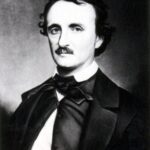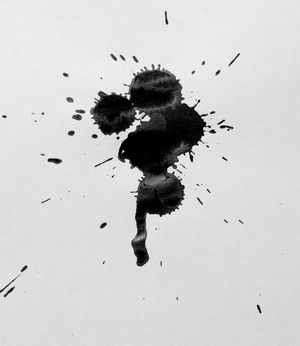If you’re a poet and want to go down in the annals of history, it might perhaps interest you to dash off a bird sonnet or two. Students may be studying them in school centuries hence.
One of the more famous bird poems is a Percy Bysshe Shelley (1792-1822) composition entitled To A Skylark.
“Hail to thee blithe spirit,
bird though never wert ….”
Another great poet of the Romantic Era, John Keats (1795-1821), had earlier penned the equally famous Ode to A Nightingale, which is more of a study in mortality than the Shelley poem, where we are meant to admire and be awed by the spirit that Shelley feels is the lark. An audio reading of Nightingale may be heard on a netlinks lesson in poetry appreciation by Michael Glyn Long. Maybe I should take the lesson and learn to appreciate this poem, because I really can’t stand it.
On the other side of the Atlantic, later in the 19th century, Emily Dickinson (1830-1886) wrote the poem, A Bird Came Down. which is a clever little piece that describes her observations of a bird that she was evidently very close to. In the beginning of the poem, Ms. Dickinson informs the reader that the bird didn’t know she was there, but she was close enough to describe his eyes as “frightened little beads” and, after even closer observation of his behavior, she decided to offer him a crumb. The bird, of course, flew away. While very little of her poetry was published during her lifetime, this has become one of Ms. Dickinson’s most frequently anthologized poems.
Scary and ominous birds abound in poetry. Even before the above mentioned poems were written, Samuel Taylor Coleridge (1772-1834) wrote about the albatross in Rime of the Ancient Mariner. As a result of this compelling tale, the unfortunate bird came to symbolize a burden and a curse, Although the bird was initially a good omen, the mariner had to go kill it and change all that. An excellent DVD on Coleridge’s life with an incredibly awesome version of The Ancient Mariner is available at Amazon, entitled Pandaemonium.
With the publication of The Raven, Edgar Allan Poe (1809-1849) became known worldwide 4 years before he died, even though he was paid a measly $15.00 for the poem. One can’t help but feel bad for poor Poe for that, if having a ‘grim, ungainly, ghastly, gaunt, and ominous bird of yore’ move in and refuse to leave wasn’t enough.
While Maya Angelou’s famous and controversial autobiography is entitled I Know Why the Caged Bird Sings, the title is actually a line from a superb poem by American poet Paul Laurence Dunbar (1872-1906), entitled Sympathy, that starts out:
I know what the caged bird feels, alas!
When the sun is bright on the upland slopes;
When the wind stirs soft through the springing grass,
And the river flows like a stream of glass;
When the first bird sings and the first bud opes,
And the faint perfume from its chalice steals–
I know what the caged bird feels!
Written in 1899, Paul Laurence Dunbar (1872-1906) chose the trapped bird to personify the sufferings of blacks in a society where, although no longer technically in slavery, they were still denied a free existence.
Children’s literature, from Who Killed Cock Robin to the four and twenty blackbirds baked in a pie, is replete with tales of our fine feathered friends.
While I love and admire most of the poems on birds, I would have to say my own particular favorite is Time To Rise, a little four line number I learned when I was 5 years old in A Child’s Garden of Verses by Robert Louis Stevenson (1850-1894):
A birdie with a yellow bill
Hopped upon my window sill,
Cocked his shining eye and said:
“Ain’t you ‘shamed, you sleepy-head!”
Reference:
- Reely’s Poetry Pages – audio poems


